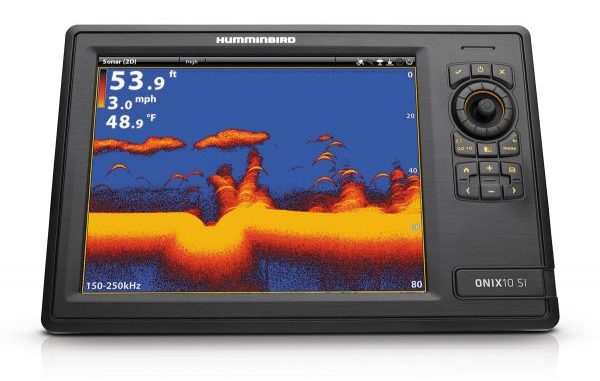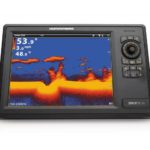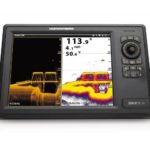
Add features and capabilities, fix problems and increase efficiency for free
There was a time when updating your electronics meant buying new units.
We gadget-minded fishermen understood that keeping up with technological evolution meant replacing our fishfinders and navigation units every eight to 10 months.
But most of us couldn’t afford to do that, so we gritted our teeth and made do with what we had until the latest crop of electronics offered enough additional horsepower to make trading up irresistible.
This form of updating was expensive in more ways than one. We had to pay for the new units, knowing that our obsolete models weren’t worth a hamburger and milkshake on the open market.
We usually also had to pay to have new power cables, Loran or GPS antennas and sonar transducers installed because our old ones would have incompatible connections or just plain wouldn’t work with the new stuff.
Even though I could install the new antennas and transducers myself, it was still a pain to run all the new cables through the wiring chases in my boat.
The earliest software updates I recall required owners to send units back to the factory and pay. Later, the growing use of home computers familiarized us with both the concept of software updates and the operation of the Internet.
Finally, we could access the manufacturers’ websites and download updates directly to our units or to memory cards that we plugged into our units to install the update.
The process has become practically automatic and, where it isn’t the makers’ websites usually include step-by-step instructions.
The latest Humminbird ONIX software update is a great example (among many) of all this.
You especially don’t want to spend a large chunk of your fishing and boating budget to buy a high-end unit only to have it made obsolete in two or three years.
The latest-version 2.7 software for ONIX units is a free download through the Humminbird Select program. It brings CHIRP 2D sonar to ONIX units without replacing the unit or its transducer and without adding a black box.
Adding a black box is plug-and-play simple, but you still have to find room to mount it and route cables to and from it. Not requiring one is a plus.
Adding CHIRP sonar technology is quite a different thing than just changing the way something looks on the screen or removing some behind-the-scenes software gremlins.
CHIRP (Compressed High Intensity Radar Pulse) was originally developed in the 1950s for radar. CHIRP sonar broadcasts a sequence of signals instead of conventional sonar’s single signal, and each CHIRP sequence includes a range of frequencies from low to high instead of conventional sonar’s single frequency.
Now that our fishfinders have more computer power than the first moon lander, they are capable of doing a lot of processing in very little time. A computer looking at echoes from a range of frequencies has much more information available to analyze than one looking at a single return at a single frequency.
It has an easier time filtering out noise and interference, and can show us a clearer, higher resolution screen picture.
Lower frequencies tend to penetrate depth better than higher frequencies, but they don’t tend to show as high a level of detail or perform as well at higher boat speeds.
Having a range of frequencies from lower to higher and enough computer power to sort them all out delivers the best of both worlds.
In everyday fishing terms, CHIRP translates into seeing fish closer to the bottom as separate objects, seeing individual fish in schools instead of just a blob, better identification of baitfish schools and the ability to see attacking game fish mixing it up with baitfish schools.
We also get better bottom tracking at higher boat speeds, and we see less interference from sonar units on nearby boats. This is why the most-popular sonar manufacturers selling units in the U.S. now offer some form of CHIRP technology.
Installing this new update starts with visiting the Humminbird website, and verifying that you have registered your unit in the free Humminbird Select program and have already updated to the most recent software previous to version 2.7.
Following product registration, users download the software to their computer. Once successfully downloaded onto your PC, unzip the files on your computer before copying them to a blank 4GB or greater Class 6 SD card.
Do not rename any files.
Once the files have been saved to the blank SD card, eject the card from your computer or external card reader and insert it into your ONIX unit. It is critical that you maintain power to your ONIX unit during the update process.
Once the installation is complete, power down the unit and restart it, and you will be ready to go.
Most software updates include a list of all the upgrades they include, and this new one from Humminbird is no exception.
In addition to 2D CHIRP sonar, it includes added sonar auto detect On/Off options, 2D sonar digital depth tracking improvements, depth contour labels on AutoChart Live, depth contour labels on metric LakeMaster chart data, dynamic labels on AutoChart Live’s colorbar, Navionics performance upgrades; increased boat icon and chart performance at low speeds, THS NMEA 0183 sentence support and a “Minimize Clusters” waypoint clustering option.
Such a list may or may not include software repairs, bug fixes and other improvements that take care of problems discovered since the last software version was released.
Today, we tech junkies can forget about replacing units every few months just to stay current and only worry about it every eight to 10 years.
If my memory serves me, this is about the time when appearances of really big advancements coincide with the beginning breakdown of units with a decade of rough marine service behind them. Always installing the latest software updates keeps your marine electronics at the top of their game and that helps them keep you at the top of yours.




